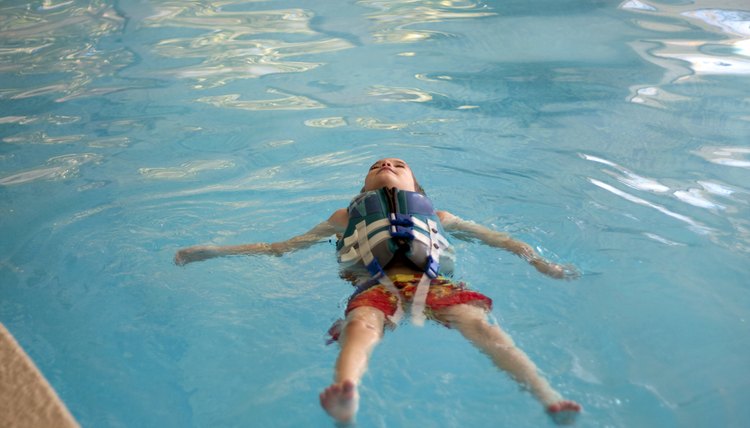How to Swim in a Life Jacket

Swimming with a life jacket is ideal for those learning how to swim or individuals swimming in lakes, oceans and rivers, since swimming in these areas can be more dangerous than swimming in a pool. A life jacket can protect you from waves and rapid currents as well as keep you safe if you become fatigued. Due to the bulkiness of a life jacket, you will need to ensure a proper fit of the life jacket before attempting to swim. While swimming with a life jacket you can opt to use your arms, legs or both.
Test your life jacket for an appropriate fit. An ill-fitting life jacket will not be effective in keeping you safe in the water. Place your life jacket on. Secure all zippers, snaps, ties and straps to make the life jacket fit you snugly. Position yourself in water up to your neck. Lift your legs up and tilt your head back toward the water. Your mouth should not be in the water and you should be floating without having to make an effort. If the life jacket rides up on you, you need to tighten the straps and snaps.
Kick your legs. Fully extend your legs while keeping them underneath the water. Kick them up and down. Kick slowly to move yourself through the water at a slow and steady pace. To move quickly through the water, kick at a more rapid pace. The act of kicking should be enough to propel you through the water without the use of your arms.
Use your arms. Should your legs become tired or if you need an extra boost to get through the water, incorporate the use of your arms while swimming with a life jacket. Extend your arms out in front of your in the water. Slowly fan your arms out to your sides making a large half-circle motion. Repeat.
Tips
If you become fatigued, rest from swimming and simply float in the water.
Warnings
For your safety, never swim alone or swim at a lifeguarded beach.
References
- "Swimming: Steps to Success"; David G. Thomas; 2005
Writer Bio
Michelle Zehr started writing professionally in 2009. She has written on health, fitness, fashion, interior design, home decorating,sports and finance for several websites. Zehr possesses a Bachelor of Arts in communication from the University of Pittsburgh, a Master of Arts in professional writing from Chatham University and a graduate certificate in health promotion from California University of Pennsylvania.
